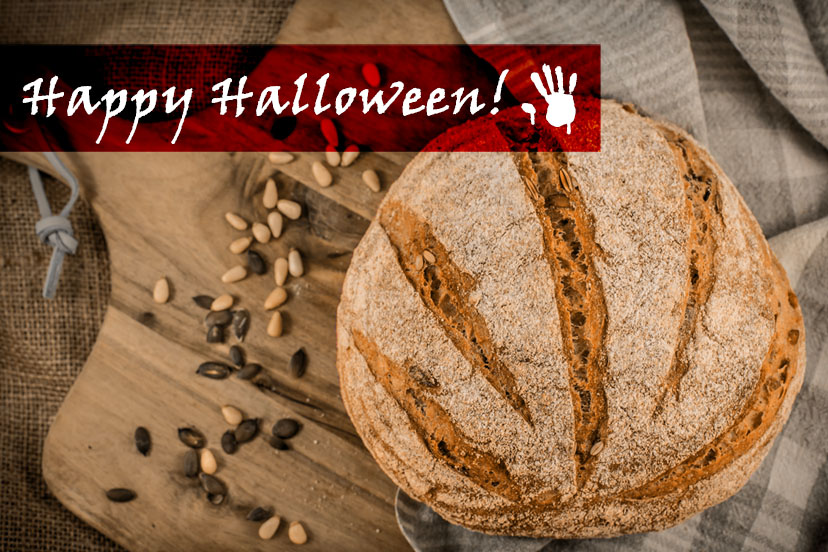|
It's that time of year again! Ghosts are wailing, witches are wicked-ing, and we're baking up a storm. Read on for our Halloween inspired, (not-so) spooky recipe for pumpkin seed & pine nut bread... Ingredients:
Method: 1: Place your 3 flours in a large bowl. Place your measured salt in one side of the bowl, and crumble your fresh yeast in the other. If you don’t have fresh, substitute for about half a 7g sachet of rapid action dried yeast. Using half a packet will mean your final loaf won’t taste too ‘yeasty’ and will give your dough more time to prove, improving the flavour. 2: Now add your water to the dry ingredients and mix to an even but shaggy consistency. When all the flours are incorporated it’s time to tip out onto your clean work surface and start kneading. Don’t be tempted to add extra flour at this stage. It will be sticky! Keep up with the kneading and after 5 minutes you should have a considerably more elastic and less sticky dough. A few more minutes work and you’re nearly there. 3: At this point you can spread out and scatter on your toasted seeds and pine nuts. Fold in thoroughly and give your dough a final few turns, before shaping into a ball and placing back in the bowl for the first prove, with its smooth side uppermost. It’s a good idea to prep the bowl with a very fine dusting of flour first to ensure it will be easy to tip out later on. 4: After an hour at room temp, fold your dough, stretching the dough underneath itself in the bowl – make four folds, taking each point of the compass in turn. The top of your dough will remain intact and smooth, but now tightened once more. Allow to rest for a further half an hour. 5: Now it’s time to shape before leaving for its final prove. Prep your proving basket thoroughly with flour (I prefer wholemeal for this job, as the bran helps prevent sticking). Prepare your work surface with a very fine but good coverage of flour and tip your dough carefully onto the surface. Firstly ‘de-gas’ the dough, then shape into a tight ball and place seam-side uppermost into your basket. Cover and prove for about an hour at room temperature, or place in the fridge to prove more slowly. 6: Preheat your oven to 240°C. When the dough is finally proved, it will bounce slowly back when depressed by your finger (if too fast, give it a little longer. If the indent remains depressed you have probably proved for too long. An hour at room temperature should be about right). Tip it gently out onto your peel and then slash with 6 or 7 curving vertical lines to emulate the grooves on a pumpkin. Inject plenty of steam into the oven as you slide your bread in (I use a pump action spray filled with water - if you don't have one, throw a couple of ice cubes onto a tray at the bottom of the oven), and bake at 220°C for 30-40 minutes. Your bread will be baked when it reaches 95°C inside, or sounds hollow when tapped. If browning too quickly, turn down to 200°C after 20 or so minutes and bake for a little longer. Enjoy! |
Our workshops are run by award-winning sourdough baker Helen Underwood.
Categories
All
Archives
November 2023
|


